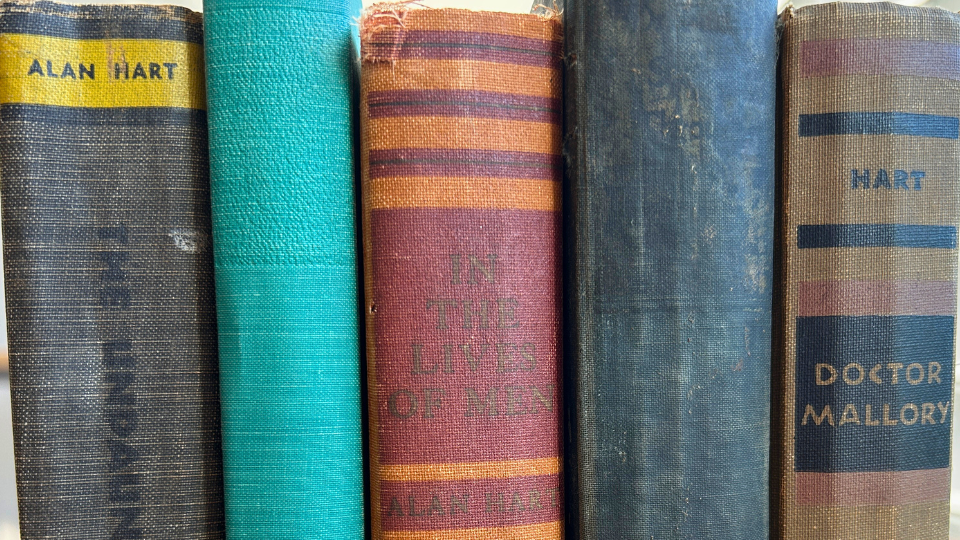
Alan L. Hart (1890–1962) was a groundbreaking physician, radiologist, and tuberculosis researcher whose contributions transformed medical diagnostics. He pioneered the use of X-ray photography to detect tuberculosis—an innovation that remains the gold standard and has saved countless lives. Hart was also the first documented transgender man in the United States to undergo gender-affirming surgery. He earned his medical degree from the University of Oregon Medical School (now OHSU) in 1917.
Beyond his medical achievements, Alan Hart was an author who wove themes of medicine and human resilience into his fiction and wrote non-fiction that explained scientific concepts to the public. Hart passed away in 1962, having carefully protected his privacy throughout his life. In accordance with his wishes, his letters and photographs were destroyed, leaving behind only a few writings and published works. Now, for the first time, Dr. Hart’s books are freely accessible online in OHSU’s Digital Collections, thanks to digitization by the Library’s Historical Collections & Archives team.
Five titles available as full-text downloads
Hart’s first novel, Doctor Mallory (1935), follows a physician’s journey from childhood aspirations to medical school and early hospital work. His career takes him to a logging town in Oregon, where he fights for ethical medical practices and dedicates himself to serving the underserved.
The Undaunted (1936) traces young doctor Richard Cameron’s quest for an anemia treatment in Seaforth, a fictionalized version of 1920s Seattle. Through Cameron and radiologist Sandy Farquhar, Hart explores themes of societal expectations and nonconformity. Upon publication, the novel earned praise for its insight into the medical profession.
Set in the town of Fairharbor, a stand-in for Tacoma, In the Lives of Men (1937) paints a vivid portrait of a physician’s life between 1892 and 1909. Hart weaves historical events—including the Panic of 1893, the Chinese Exclusion Act, the Spanish-American War, the Klondike Gold Rush, and timber labor conflicts—into a medical drama inspired by Hart’s own tenure at Tacoma General Hospital.
Dr. Finlay Sees It Through (1942) follows a retired doctor who returns to his Pacific Northwest hometown to rebuild his old hospital with a revolutionary model of socialized, cooperative medicine. Against the backdrop of the Great Depression, Dr. Finlay faces corruption, romantic entanglements, and fierce opposition from fellow physicians.
These Mysterious Rays (1943), Hart’s groundbreaking non-fiction book, demystifies X-ray and radium technology for both professionals and the public. Translated into multiple languages, including Spanish, this book was a significant early work in the field.
Visit OHSU’s Digital Collections to access these books and more from our Historical Collections & Archives.